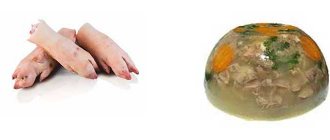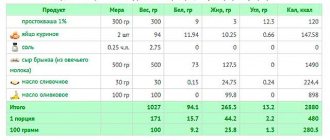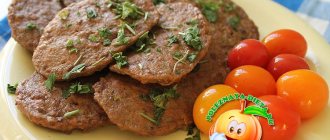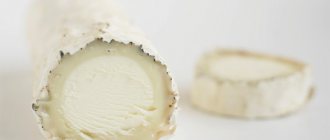Natural Collagen for Natural Youth
If the set of proteins, carbohydrates and biologically active compounds is different for each individual variety of jellied meat, then the abundance of collagen is what unites all its types. Jellied meat can be considered a favorite among food products in terms of nutrient content.
Collagen is an essential participant in the process of cell renewal, prevents the abrasion of cartilage, and fights wrinkles. When cooked, most of it is destroyed, but what remains in the jelly is quite enough to have a powerful effect on the body. Thus, the aging process slows down and joints become healthier.
In addition to collagen, aspic contains a large amount of gelatin. In combination with collagen molecules, it forms stable compounds that prevent cartilage abrasion and improve shock absorption and joint mobility. That is why very often, even doctors who recognize the effectiveness of exclusively official medicine, recommend that patients with problems with the musculoskeletal mechanism regularly consume jellied meats and jellies.
Jellied meat contains an amazing concentration of B vitamins, retinol and glycine, as well as a whole complex of essential amino acids. They have an antiviral effect, promote the absorption of calcium and are responsible for the formation of hemoglobin, a deficiency of which the body cannot function normally. Retinol improves immunity and has a positive effect on the optic nerves, aminoacetic acid (glycine) is necessary for the normal functioning of the brain and nervous system, relieves psychological stress and even helps cope with depression.
Without measure, even medicine is poison!
This expression is appropriate not only in relation to medications. If you eat jellied meat in huge quantities, its benefits will also be quite dubious. First of all, because with an excessive appetite for jelly, a fairly large amount of cholesterol enters the body. When it accumulates in excess, it “cements” blood vessels with cholesterol plaques and negatively affects the circulatory system.
Jellied meat is difficult to digest by the digestive tract: the abundance of meat and offal, garlic and spices that are quite aggressive towards the mucous membranes of the gastrointestinal tract increase the digestion time of the dish. As a result, heartburn, heaviness in the stomach and liver problems appear. The calorie content of jelly is also quite high. Depending on the recipe and preferred meat, it can reach 350 kcal per 100 grams of the finished product! So this dish is not for those losing weight.
Calorie content of jellied meat (per 100 g)
- Chicken feet – 120 kcal;
- beef – 140 kcal;
- chicken – 150 kcal;
- turkey – 160 kcal;
- pork – 180 kcal;
- from chicken legs and thighs – 290 kcal;
- from pork legs – 350 kcal.
The basis of the dish - meat broth - contains a large amount of growth hormones. They provoke the development of inflammatory processes and, in addition, can provoke tissue hypertrophy. And with pork broth, histamine enters our body, which often causes the development of appendicitis, furunculosis and gallbladder diseases.
To saturate the body with useful substances, it is enough to eat jellied meat only a few times a week. In such quantities it will bring maximum benefit and will not cause disturbances in the functioning of the cardiovascular system, gastrointestinal tract and liver.
Each housewife has her own secrets for preparing various meat dishes and tries to make them healthy and safe for the figure. In order for consumption to be safe for your figure, you need to at least know approximately how many calories are in the jelly. Jellied meat, beloved by many, varies greatly in calorie content depending on the preparation recipe, so the amount of nutrients depends on the ingredients. Depending on the meat and offal used, a strong meat broth may have different nutritional value and may or may not affect the figure. It goes without saying that fatty meat, offal or bones increase the calorie content of jellied meat. If you use chicken meat with offal, then this decoction will be lighter. One way or another, the main ingredients answer the question of how many calories are in jellied meat. We have tabulated the calorie content of all types of jelly so that you can estimate the calorie content of the dish, depending on the ingredients of the recipe: Products Kcal per 100 g of product Pork jellied meat 180 Beef jellied meat 139 Chicken jellied meat 150 Chicken leg jellied meat 120 Chicken thigh and paw jellied meat 293 Chicken aspic in a multicooker 103 Turkey jellied meat 161 Jellied pork legs and pork 352 BENEFITS OF JELLY In many national cuisines there are analogues of our jelly. Why is strong meat and bone broth so popular all over the world? Since during long-term cooking all the substances of cartilage, bones and connective tissues of meat and offal pass into the broth, this broth becomes a storehouse of protein - collagen. As we all know, collagen fills our skin tissues, responsible for the elasticity and youthfulness of our skin. Also, regular consumption of gelatinous dishes prevents inflammation and joint diseases (arthritis and arthrosis), because During long-term heat treatment, gelling substances are produced that restore joint mobility and strengthen bones and connective tissues. One of the substances is lysine, which ensures the body’s absorption of calcium and also, together with retinol, strengthens the immune system. Jelly is also a source of B vitamins for the body, which are involved in hematopoiesis, improve hemoglobin and demonstrate high antioxidant properties. What is important is that polyunsaturated fatty acids and glycine (aminoacetic acid) in the decoction have a positive effect on the functioning of the brain and the entire nervous system. This is reflected in improved memory, concentration and increased mental performance. In general, jelly should be included not only in the menu for the holiday table. Jellied meat can also be included in the Sunday menu, because preventing diseases of the musculoskeletal system will not hurt anyone, right? The calorie content of jellied meat can be adjusted using additional ingredients. We include more vegetables, improve the taste with spices and seasonings, choose beef or poultry instead of pork. HARMFUL JELLY The harm to the health of this dish is also obvious! Thick bone broth is cholesterol almost in its pure form, so it is not recommended to overuse jelly. Cholesterol will be deposited on the walls of blood vessels as cholesterol plaques, and this will lead to their narrowing. You understand that this can lead to cardiovascular diseases and their extreme manifestations - strokes and heart attacks. Also, eating an excessive amount of jelly can lead to a slowdown in metabolism, a noticeable burden on the liver, and ultimately lead to illness and weight gain. In conclusion, I would like to say that jellied meat and jelly do not differ in the basic cooking technology and are one and the same dish. But in ordinary culinary usage, jellied meat is considered to be a lighter and less calorie dish made from poultry or young beef (veal). The calorie content of jelly is higher, since it is a stronger and thicker broth of pork and pork by-products (ears, legs, etc.).
Russian folk cuisine is famous for its delicious and satisfying dishes, which are famous throughout the world. The most famous are: pancakes, borscht and, of course, jellied meat (also called jelly). It is a boiled broth containing pieces of some kind of meat. When cooled, it turns into a jelly-like mass.
For its preparation, by-products (legs, heads and tails) of ungulate animals, such as pigs and cows, as well as chicken meat are used. Experts consider jelly to be high in calories and therefore do not recommend it to those who want to lose excess weight. Let's consider the calorie content of jellied meats prepared using different types of meat separately. When purchasing a ready-made dish in a store, you can check its calorie content on the packaging.
Many people are interested in the question, what are the benefits of jelly? It should be noted that it contains a special protein – collagen. This substance is very beneficial for the body, especially for skin cells. It provides elasticity to tissues and prevents them from breaking down. Experts include this dish in the diet of those who have problems with the musculoskeletal system.
Jellied meat contains another useful substance – glycine. It has a beneficial effect on human performance, increases concentration, and also improves memory. Consequently, jelly has a lot of beneficial properties and vitamins.
What are the benefits of beef jellied meat?
A dish like jellied meat is as traditional for any holiday feast as Olivier salad or herring under a fur coat. It is cooked, naturally, from meat, and the meat can be pork, chicken or beef. And of course, such a dish can hardly be called dietary, since it contains plenty of calories. But jellied meat is extremely tasty, especially with mustard or horseradish! Including jellied meat with beef.
Beef is a more preferable type of meat to eat than pork, and here's why. Unlike a pig, which can eat anything, even the meat of its own kind, cows and bulls eat exclusively plant foods.
If an animal lives in an ecologically clean area, then its meat contains much less harmful substances. In addition, the fat content of beef meat is lower than pork and is 20–25%. The younger the animal, the better its meat is absorbed by our body. Therefore, it is preferable to eat veal than beef.
Jellied meat has benefits, like any food product, but not for everyone. Beef jellied meat can be useful for those whose diet is poor in animal fats, animal proteins, vitamins and microelements. It's no secret that jellied meat is a high-calorie dish. It contains a large amount of animal protein, which can be useful if you want to build muscle mass or are involved in any sport that requires a lot of physical exertion.
To ensure that your jellied meat is as healthy as possible, choose lean meat. It is advisable to strain the broth for jellied meat through several layers of gauze in order to separate the fat from the broth, since from the point of view of nutritionists, excess fat in beef is undesirable. Beef fat causes increased stress on the liver, pancreas and bile ducts.
How to calculate calories correctly?
The calorie content of jellied meat has a direct dependence on the recipe chosen for preparing the dish, on its proportions, and the peculiarity with which it is prepared also plays an important role. The energy value of this product is very important for overweight people or those on a diet.
The most popular types of meat products for its preparation are:
- pork;
- beef;
- chicken.
Each of these types has its own energy value.
To correctly calculate its calories, it is necessary to sum up the indicators of the ingredients that were used. Consequently, these are bones, meat, cartilage, fat, as well as spices and other ingredients used for its preparation.
A significant difference is the calorie content of jelly prepared with chicken meat than the calorie content of jellied pork. The cooking method also affects their energy value. Hence the discrepancies in figures from different authors per 100 grams of product.
Due to the origin of the ingredients used to make the jelly, it is endowed with a lot of useful substances. It contains quite a lot of vitamins and minerals that are beneficial for the human body. It also has a positive effect on the nervous system, prevents joint diseases from developing, and also strengthens nails, teeth and bones.
More on the same topic:
- Stella Writes,
Well, what is the calorie content of chicken jellied meat? There is a recipe, but it’s not clear what the calorie content is.
Lerka writes,
If you go by the recipe given, then the calorie content of such jellied meat should be somewhere in the region of 100 kilocalories per 100 grams, maybe a little more.
Kopylova writes,
In fact, jellied meat is a delicate matter, and the calorie content of jellied meat, as well as the signature recipe, will be different for each housewife.
Marya writes,
The lowest calorie content of jellied beef is made from beef, which, by the way, can be further reduced if you put beef tongue in the beef broth. And much tastier.
Roza Writes,
!80 kilocalories? Not so much! There's a lot more to chocolate and confectionery!
Marya writes,
But there is less fat in the confectionery.
Daria writes,
and what kind of recipe is this? This is not jellied meat - this is jelly. Who adds gelatin in the cold?
ZoyaK Writes,
Add. And they call it jellied meat. What to do if the infection does not freeze?
Irma writes,
Gelatin is not added. You need to cook more.
Alusik Writes,
Good afternoon! I don’t understand how jellied meat can’t freeze. especially with beef, you just need to cook it for six hours, that’s all. I don’t even know what gelatin is
Nutritional value and chemical composition of “Pork and beef jellied meat”.
| Nutrient | Quantity | Norm** | % of the norm in 100 g | % of the norm in 100 kcal | 100% normal |
| Calorie content | 229 kcal | 1684 kcal | 13.6% | 5.9% | 735 g |
| Squirrels | 22.3 g | 76 g | 29.3% | 12.8% | 341 g |
| Fats | 14 g | 56 g | 25% | 10.9% | 400 g |
| Carbohydrates | 3.7 g | 219 g | 1.7% | 0.7% | 5919 g |
The energy value of Jellied pork and beef is 229 kcal.
Primary Source: Created in the application by the user. Read more.
** This table shows the average levels of vitamins and minerals for an adult. If you want to know the norms taking into account your gender, age and other factors, then use the “My Healthy Diet” application.
Read also: Energy value of fried chicken
Jellied meat (jelly) is a fairly popular dish, without which not a single festive table can do. Known since the 16th century. There are many recipes for its preparation, but, in essence, it is boiled meat with broth in a 1:2 ratio.
Calorie content of chicken jellied meat
The energy value of jelly prepared from chicken feet has the lowest values, which vary within 120 kcal per 100 grams of product. Some parts of the chicken’s body (for example, legs) are completely devoid of fat deposits, thanks to which poultry meat is recognized as dietary. These indicators do not apply to jellied meat cooked entirely from a chicken carcass.
Energy indicators here reach 200 kilocalories. But, no matter what, jelly prepared with chicken meat will not be able to form fat deposits on the body.
How many calories are in jellied meat?
Let us immediately note that for a dish such as jellied meat, the calorie content will be difficult to unambiguously determine. It is largely determined by the ingredients and recipe. For example, if you take jellied pork, then in the classic recipe, then:
Its calorie content will be equal to, per 100 grams of product:
But we can often see a rather thick layer of fat appear on the surface of the jellied meat. Therefore, pork jellied meat can have different calorie content (sometimes up to 350 kcal). Therefore, for those who adhere to a diet or during fasting days, pork jellied meat is, of course, not recommended.
Jellied meat made from chicken is much lower in calories. Its energy value is approximately 120 kcal per 100 g. product. Considering that the best chicken jellied meat is made from “old” chicken, which has relatively little fat, its reasonable consumption will not significantly affect body weight. In addition, this type of jellied meat is very tender and, like any chicken dish, can well be called a dietary product.
But for people who are prescribed an extremely strict diet, beef jellied meat is best suited, the calorie content of which is only 80 kcal per 100 grams. product.
What is the calorie content of jellied meat prepared in different ways? And here it is:
Table of caloric content of jellied meat, per 100 grams of product:
| Product | Calories, in kcal |
| beef | 80,0 |
| pork | 180,0 |
| chicken | 120,0 |
| turkey | 52,0 |
| pork feet | 200,0 |
And the nutritional value of jellied meat prepared in different ways is as follows:
Read also: Film Kharatyan and Kabo
Table of nutritional value of jellied meat (BJU), per 100 grams of product:
| Product | Squirrels, gr. | Fats, gr. | Carbohydrates, gr. |
| beef | 11,4 | 2,8 | 0,5 |
| pork | 10,0 | 5,2 | 1,2 |
| chicken | 12,0 | 7,5 | 0,7 |
| turkey | 8,2 | 2,5 | 0,7 |
| pork feet | 16,2 | 13,3 | 0,9 |
How to prepare this dish at home? Here is one of the recipes:
Chicken jellied meat:
- Chicken breasts - 2-3 pieces - depending on size
- Boiled potatoes - 1 piece
- Boiled egg - 4 pieces
- Parsley - 1 bunch
- Garlic - 5 cloves (to taste)
- Gelatin (with seasonings) - 700 g. broth
Boil potatoes and eggs. The eggs are cut into 4 pieces each, and the potatoes into cubes. Boil the chicken, chop it finely (you can even just split it with your hands). Parsley is cut. They lay out the products. Gelatin is diluted in chicken broth and cooked, stirring, over low heat for about 10-15 minutes (according to the instructions). At the end, add finely chopped garlic to the broth. Pour broth over cooked foods. Then the dish is placed in the cold to harden. That's all! Eat for your health, only in moderation, since the calorie content of jellied meat, even from chicken, is quite high.
Energy value of pork jellied meat
Jelly made from pork has the highest calorie content. This is due, first of all, to the fact that pigs are raised not only to produce meat, but also lard.
Thus, per 100 grams of product the data ranges from 190 to almost 330 kilocalories.
An important role in this case is played by the fat content of the ingredient of the dish chosen for cooking. Consequently, due to the fact that the calorie content of jellied meat is quite high, it cannot be consumed during fasting days or during a diet.
Summarize
From all of the above, the corresponding conclusion follows: a reasonable amount of food eaten, no matter how high in calories it is, will not cause harm to health, even if it is jellied meat. Of course, if there is a diet, then it is best to avoid pork jelly. But at the same time, no one forbids you to eat jellied beef or chicken.
The calorie content of jellied meat per 100 grams of a particular type is different. Each of them has its own benefits and a useful set of substances. But, despite everything, this is a very tasty and satisfying dish of Russian national cuisine.
Its calorie content will be 180 kcal per 100 grams of product
But we can often see a rather thick layer of fat appear on the surface of the jellied meat. Therefore, pork jellied meat can have different calorie content (sometimes up to 350 kcal). Therefore, for those who adhere to a diet or during fasting days, pork jellied meat is, of course, not recommended.
Jellied meat made from chicken is much lower in calories. Its energy value is approximately 120 kcal per 100 g. product. Considering that the best chicken jellied meat is made from “old” chicken, which has relatively little fat, its reasonable consumption will not significantly affect body weight. In addition, this type of jellied meat is very tender and, like any chicken dish, can well be called a dietary product.
But for people who are prescribed an extremely strict diet, beef jellied meat is best suited, the calorie content of which is only 80 kcal per 100 grams. product.
What is the calorie content of jellied meat prepared in different ways? And here it is:
Table of caloric content of jellied meat, per 100 grams of product:
| Product | Calories, in kcal |
| beef | 80,0 |
| pork | 334,0 |
| chicken | 120,0 |
| turkey | 52,0 |
| pork feet | 200,0 |
And the nutritional value of jellied meat prepared in different ways is as follows:
Table of nutritional value of jellied meat (BJU), per 100 grams of product:
| Product | Calories, in kcal |
| beef | 140,0 |
| pork | 334,0 |
| chicken | 100,0 |
| turkey | 52,0 |
| pork feet | 200,0 |
How to prepare this dish at home? Here is one of the recipes:
Chicken jellied meat:
- Chicken breasts - 2-3 pieces - depending on size
- Boiled potatoes - 1 piece
- Boiled egg - 4 pieces
- Parsley - 1 bunch
- Garlic - 5 cloves (to taste)
- Gelatin (with seasonings) - 700 g. broth






